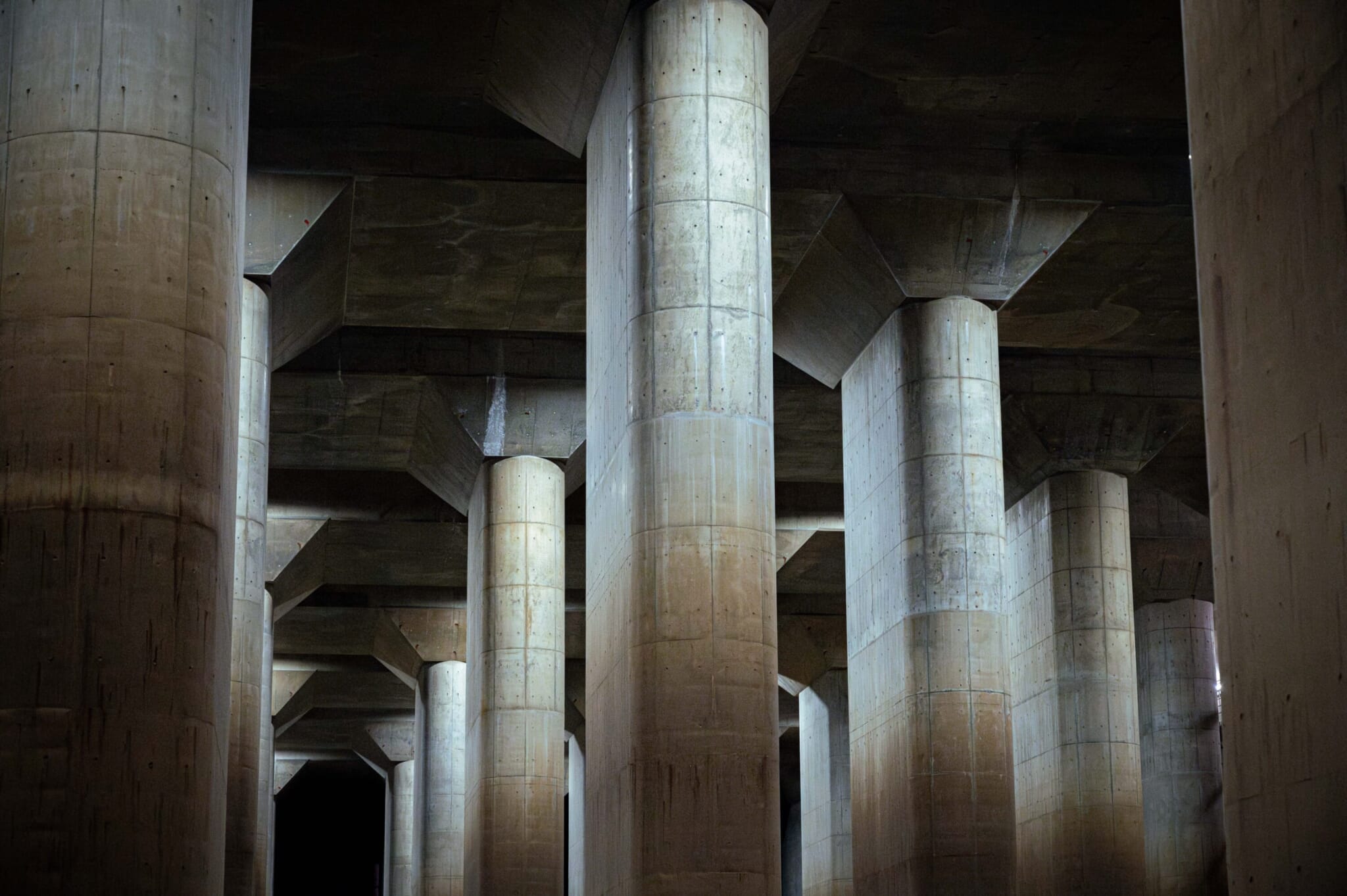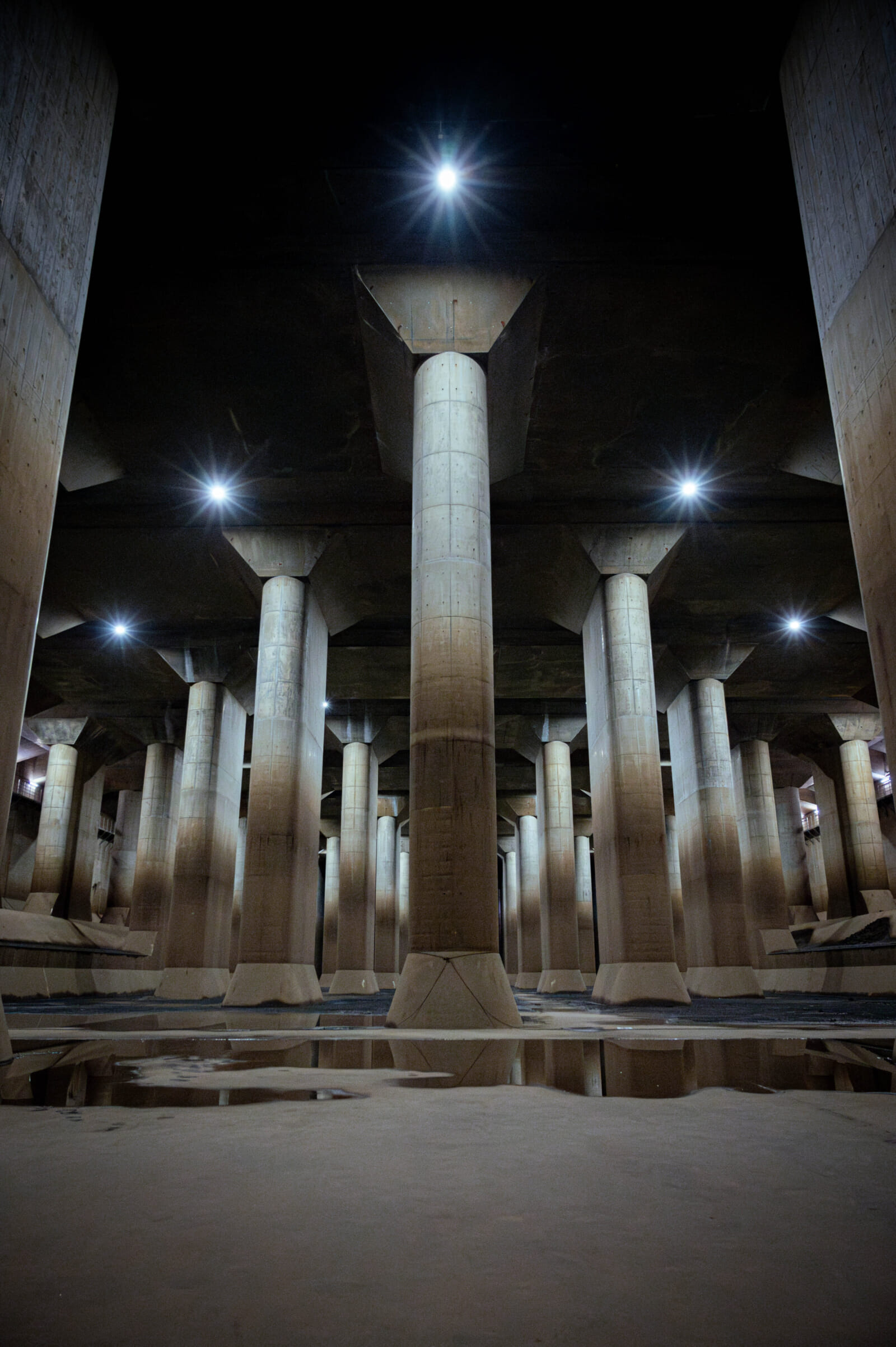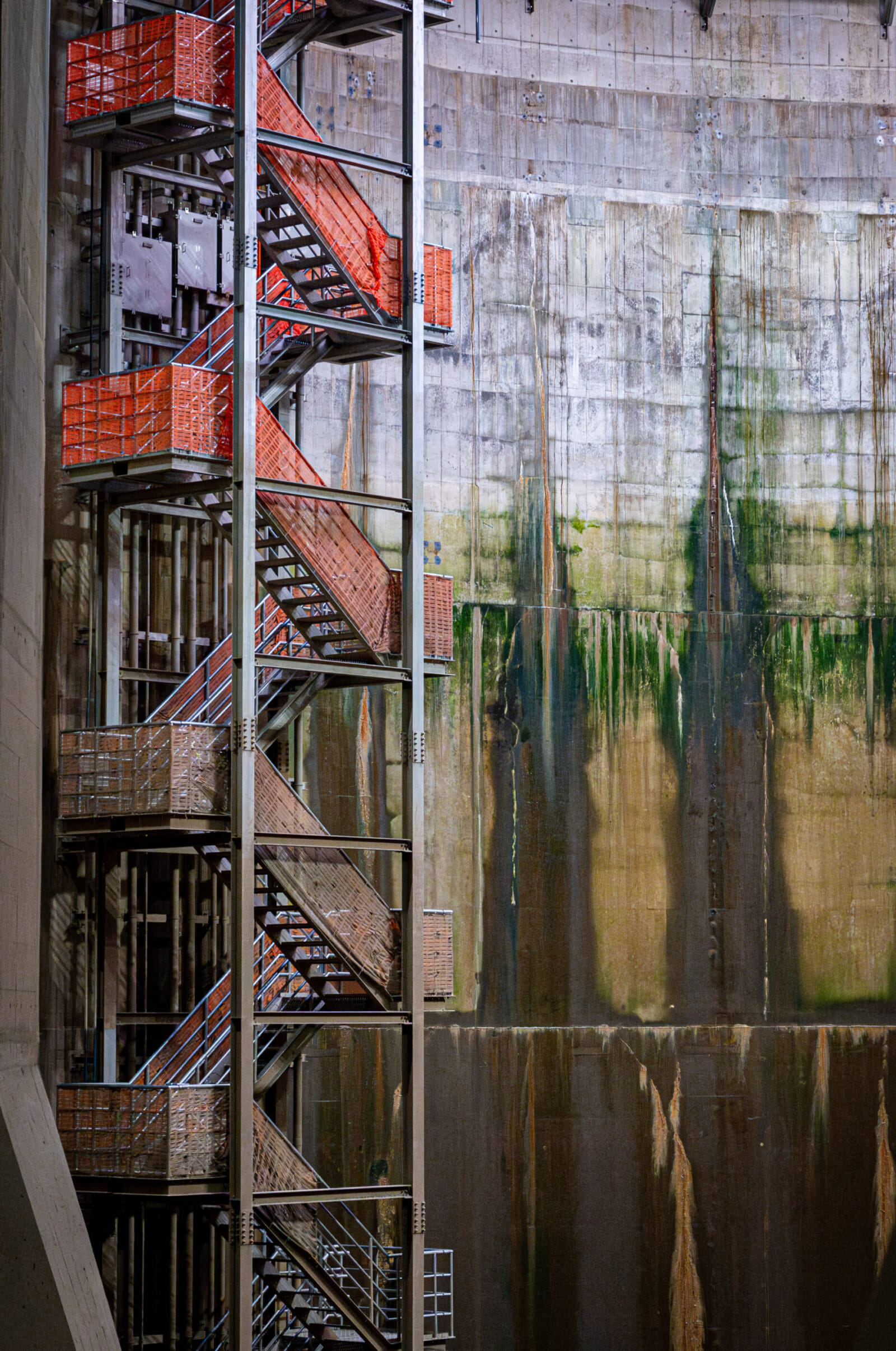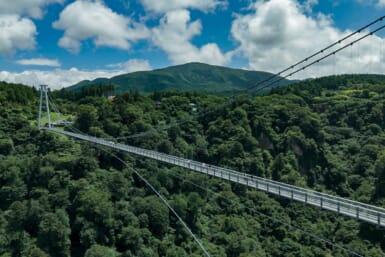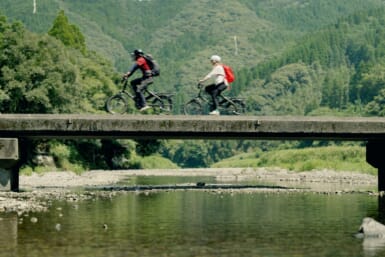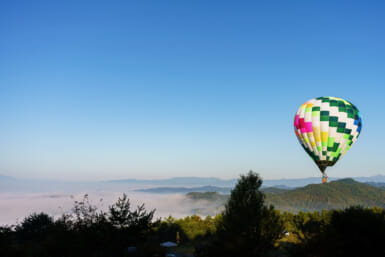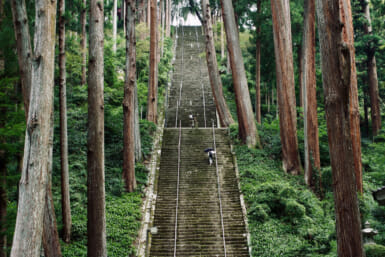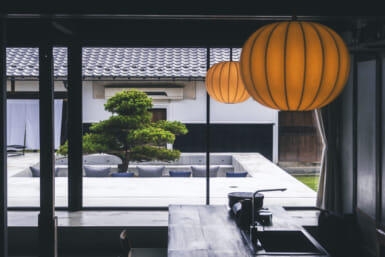Japan and its major cities are built to withstand. As a country known to experience a variety of natural disasters, most notably earthquakes and typhoons, its engineering and infrastructure have adapted and evolved to accommodate Mother Nature’s extremes. Many skyscrapers are fitted with seismic dampers to counteract earthquake vibrations, while beneath the earth, tucked away out of sight, a maze of massive tunnels waits in silence, ready to redirect an almost unimaginable quantity of water should flooding occur above ground.
Today, those keen on exploring this hidden temple of cold concrete can do so (when it’s not in operation, of course).
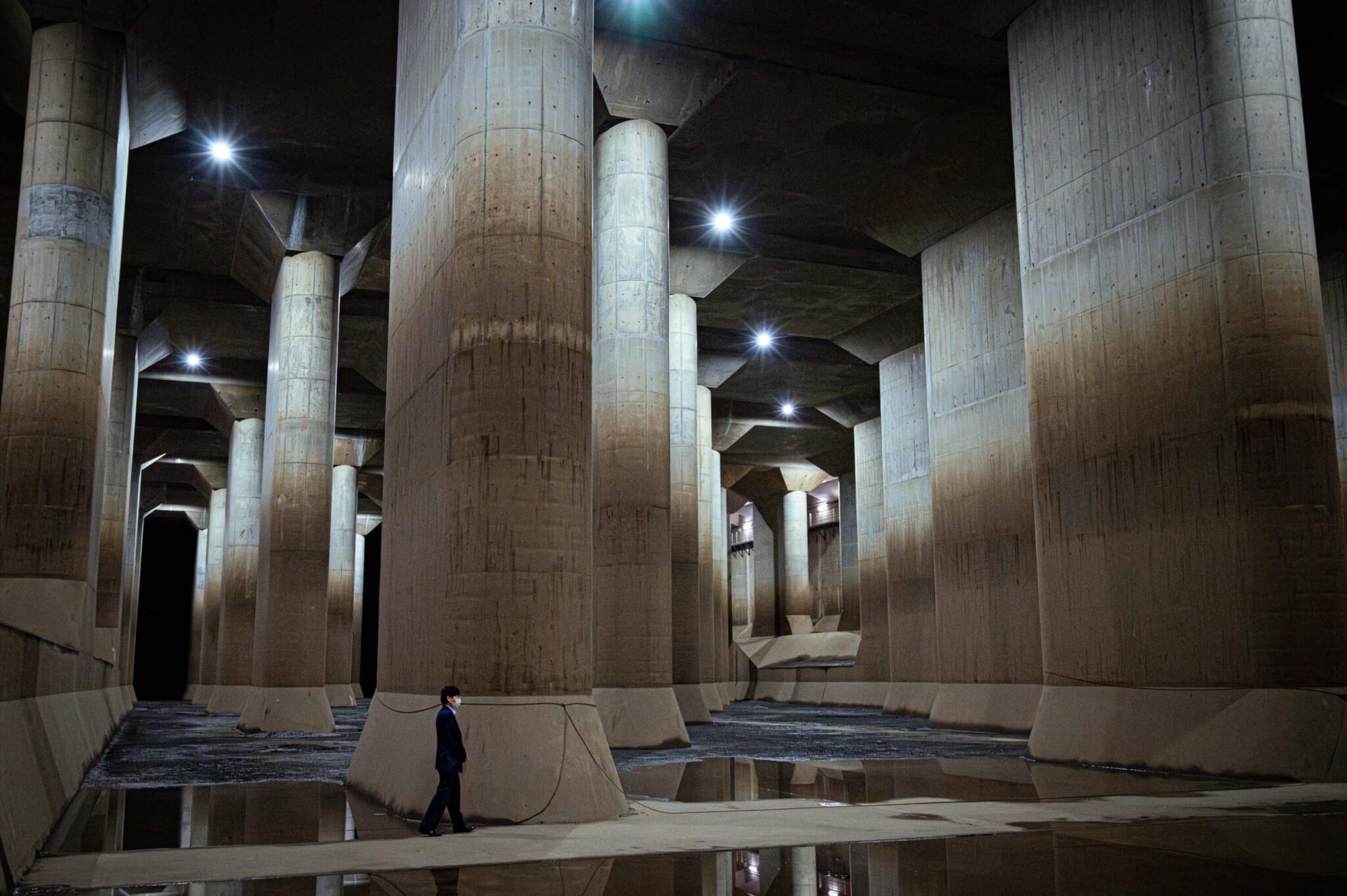
A Labor of Necessity
The Metropolitan Outer Area Underground Discharge Channel is one of the world’s largest underground floodwater diversion facilities. Situated an astonishing 50 meters below ground, it extends for 6.3 kilometers — tunneling through the earth beneath the city of Kasukabe in Saitama, the prefecture that sits just north of Tokyo.
This gargantuan structure was completed in 2006, after 13 years of construction, and exists to protect Tokyo and the surrounding areas from damage due to heavy rainfall, typhoons and overflowing rivers — issues that have plagued the region for centuries, but which were exacerbated by rapid urbanization. It’s a feat of engineering, a massive underground channel composed of concrete tunnels that connect five vertical shafts, some of which are more than 30 meters across. At one end lies its most visually striking feature: a cathedral-like cistern the size of a large aircraft hangar. Supported by dozens of imposing pillars, it resembles a long-abandoned stone temple dedicated to nature’s destructive power.
This facility is operated around seven times per year, diverting excess rainwater into the Edo River. In 2015, this underground system rerouted and discharged a record of approximately 19 million cubic meters of water during the 17th and 18th typhoons of that year. For context, a single cubic meter of water weighs an entire metric ton.
How Does It Work?
The process begins above ground, at a series of small and medium-sized rivers, including the Ootoshifurutone, Komatsu, Kuramatsu and Naka, and also a waterway known as the No. 18 Water Channel. When heavy rain causes these bodies of water to overflow, the excess makes its way into four of the aforementioned five cylindrical underground shafts, which are positioned to collect floodwaters.
From here, the water is routed through the subterranean tunnels until it reaches the No. 1 shaft, sometimes affectionately referred to as the “gigantic shaft.” From this enormous cylinder, it flows into the underground cathedral, also known as the pressure-adjusting water tank, which lessens the force of the water. After this, a drainage pump station at the end pushes the water via six sluiceways into the much larger Edo River, which leads out to Tokyo Bay.
If that all sounds a bit complicated, just imagine five buckets connected to one another by a hose. As the first four buckets fill up, water passes through the hose until it reaches the fifth and final bucket. The water is then channeled into a larger tank, then safely released via a pump. Now imagine if those buckets were made of concrete and more than 60 meters tall — 14 meters taller than the Statue of Liberty.
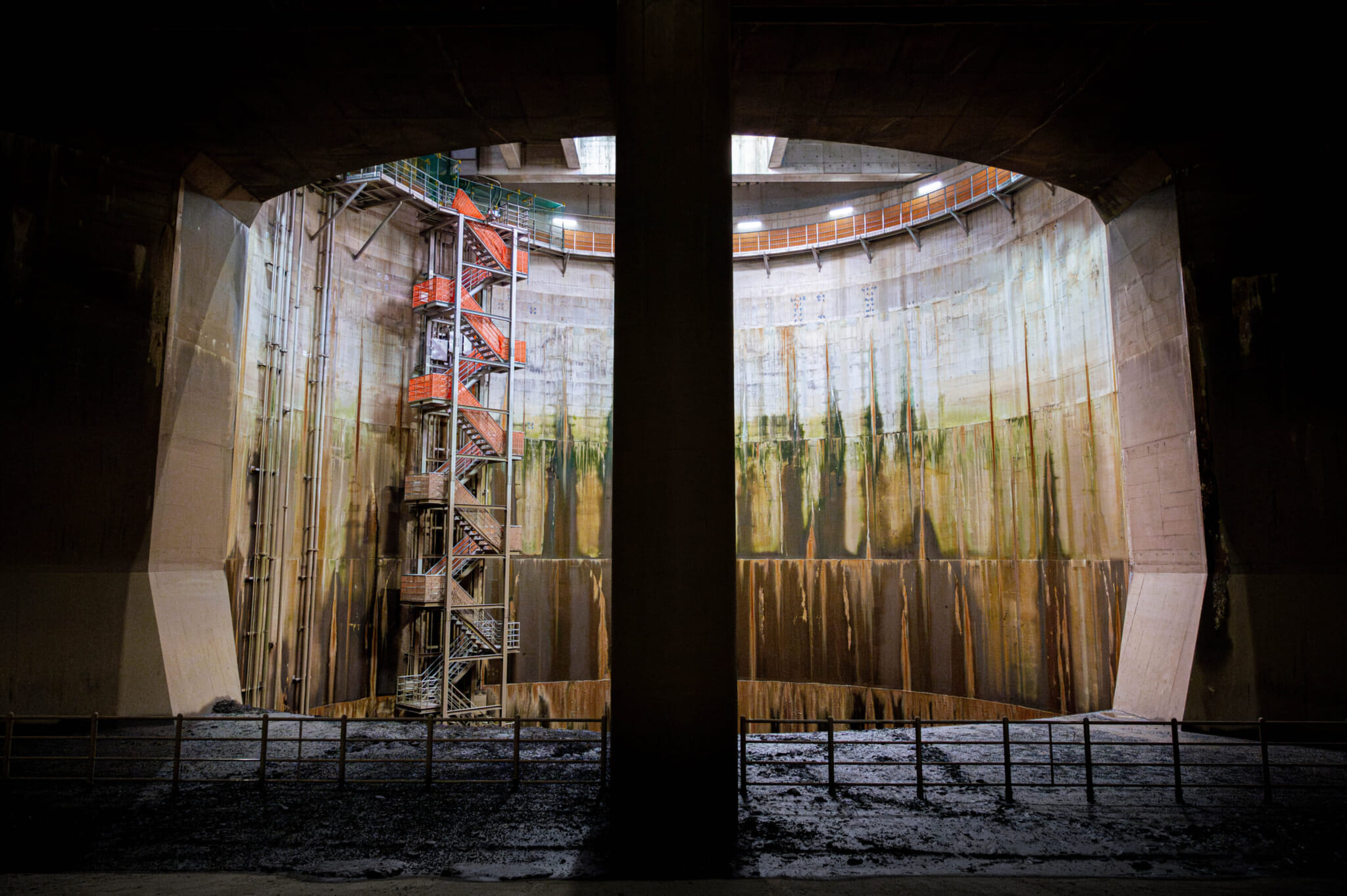
Take a Tour
One thing about the Metropolitan Outer Area Underground Discharge Channel: Words will never do it justice. No number of measurements or quotes pertaining to volume of water will ever translate to an accurate image in the mind.
Thankfully, we don’t have to just imagine it. Tours run every day, including Saturdays, Sundays and national holidays (with the exception of the year-end and New Year holiday period and days when the facility is being inspected or is in operation), and visitors can choose from one of four different tour options.
The first and most popular of these offerings is a 55-minute tour of the underground temple — or “the pressure-adjusting water tank” if you’re feeling less poetic. With its enormous concrete pylons, the 18-meter-high cavern has an awe-inspiring aura of symmetry and silence, and it makes for incredible photos. The other tour options also include a trip to the pressure-adjusting tank, but with the addition of other sections, such as the No. 1 shaft, the pump room and the large impeller at the back of the pressure-adjusting tank.
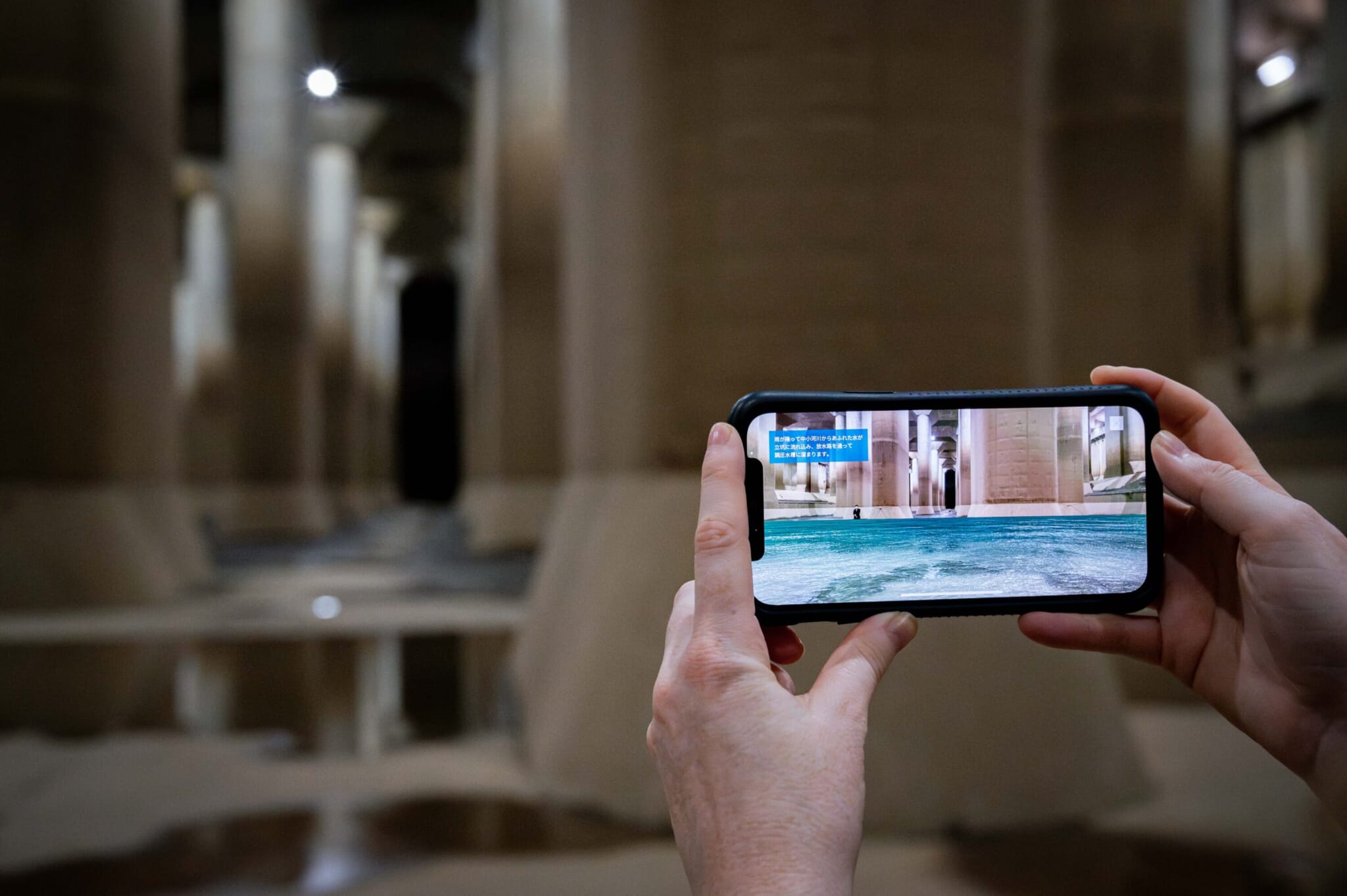
All of these tours include the option to visit the facility’s exhibition room, where the operation of the discharge channel is explained via small-scale models, and the philosophy behind its construction — one of taming the floodwaters as opposed to fighting them — is conveyed via a short film. It’s best to keep your smartphone handy, too, as there is a free augmented reality app available that cleverly allows you to see the system filling with virtual water as you stand in it.
Do be aware: There is English informational material available that explains the history and inner workings of the underground discharge channel, but the tour guide will explain what you’re seeing in Japanese. While this doesn’t detract from the experience on the underground temple course, which is very straightforward, as a safety measure, some of the more precarious tours may turn back those without a Japanese-speaking party member.
More Info
The pressure-adjusting tank lies under Kasukabe, a town about 32 kilometers from central Tokyo and accessible by train.
For more detailed information about getting to the location, tours and making a booking, visit the facility’s official website.

